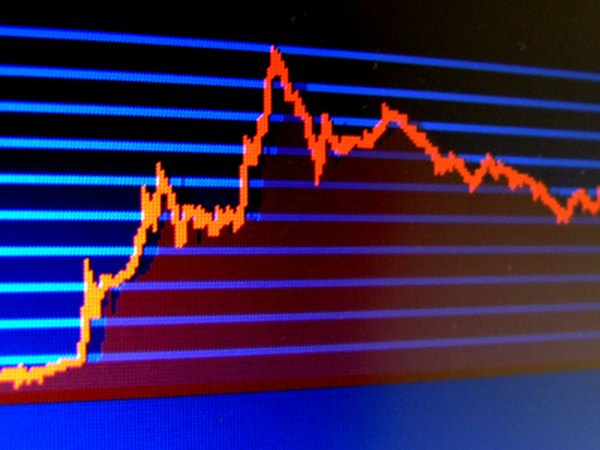The Importance of Price Changes From the Previous Day in the Stock Market
Watching the previous day's price change can improve stock buying decisions.
stock market analysis screenshot image by .shock from Fotolia.com
A trader differs from an investor in the stock market based on the time frame for profits. While investors look to the long-term, traders tend to take profits in the short-term. This means a trader may hold a stock for as little time as a day or as much as a year, but seldom longer. For a trader, the previous day’s price changes for a stock can indicate whether he should buy or sell.
Price Range
The range in prices for a stock reflects volatility. If you see a stock taking wild swings in one day, this indicates that some kind of news has come out about the company issuing the stock. Compare the range of prices on any given day to other days. If you see a sudden large swing in prices, this may indicate ensuing volatility for that stock.
Momentum
The closing price on a stock can tell you much about the near future. If a stock closes near the top of its range, this indicates that momentum could be upward for the next day. If a stock closes near the bottom of its range, sellers have dominated buyers for the day and the stock could fall under additional selling pressure the next day.
Volume
You must always check the volume — the number of shares traded. This indicates the amount of interest in buying or selling a stock. If a stock goes up on larger-than-average volume, that means investors drove the price up because a significant number of people are interested in owning it. If a stock price goes up on very low volume, only a small number of investors drove the price up and the rise won’t last. A stock that goes down on increased volume may have much more downside risk because people are getting out of it. A stock that goes down on light volume presents less of a risk that it will go down further.
Opening Bids
Compare each day’s opening bid to the previous day’s stock price. If pre-market bids run higher than the closing price, the stock may have more upside potential. If bids run lower than the previous day’s closing price, investors may be ready to dump the stock. This is a very short-term indicator, and a stock can reverse direction in a single day, so use opening bids as a rough guide but not as guarantees of stock direction for the day.
References
Writer Bio
Kevin Johnston writes for Ameriprise Financial, the Rutgers University MBA Program and Evan Carmichael. He has written about business, marketing, finance, sales and investing for publications such as "The New York Daily News," "Business Age" and "Nation's Business." He is an instructional designer with credits for companies such as ADP, Standard and Poor's and Bank of America.

